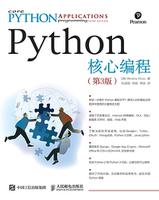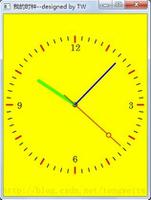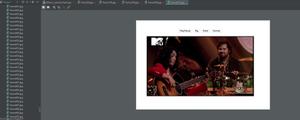python核心编程一书笔记之第一篇

#!/usr/bin/env python
# -*- coding:utf-8 -*-
#env 是一个命令用来寻找系统中的python解释器。第二条解释使用utf-8编码
在类unix系统中允许python为了防止出现找不到命令经常会加上一段申明,在python3以下的版本需要加上编码申明来实行兼容:
在python中的第一个案例:
1 print \'Hello World!\'2 #你好这个世界 嘿嘿!
View Code
print 这个命令用于输出,常用来查看变量里面的内容,或者输出一些内容显示给用户。
变量是会变的量所以叫做变量。变量可以帮助程序员记忆一些东西,所以一些变量名都是代表着一些内容。变量的起名规则:只能由数字,字母,下划线组成,其中数字不能开头,变量名最好可以给你一种见名起义的感觉,变量名不要起太长不方便记忆。
在python中_下划线可以起到重复上一条命令的作用例:
1 >>> 1 == 12 True
3 >>> _
4 True
5 >>>
View Code
在python中三种常用的字符串格式操作符%s,%d,%f %s代表字符串,%d代表整数,%f代表浮点型。例:
1 name1 = \'alex\'2 name2 = \'eric\'
3 name3 = \'seven\'
4 print \'name1:%s,name2:%s,name3%s\' %(\'name1\',\'name2\',\'name3\')#可加引号,也可不加,python3中必须加。
用户的输入可以用raw_input(\'\')等待用户输入内容,如果等待用户输入的是密码可以这么做例:
1 import getpass2 name = raw_input(\'You name:\')
3 pwd = getpass.getpass(\'You pwd:\')
如何将用户输入的字符串转换成整形例:
name1 = int(raw_input(\'Guess the number:\'))
查询帮助信息help(内建函数)即可查帮助信息。
注释:帮助理解用的,有申明注释,代码注释例:
1 #!/usr/bin/env python2 # -*- coding:utf-8 -*- #申明注释
3 # 可做当行注释
4 \'\'\'
5 \'\'\' #多行注释,可用三个单引号或者三个双引号不可混用。
算术操作符+ - * / // % **
前四种在python中与正常算术运算符一样,可正常加减,但不可字符串+,-整形, *对字符串使用的话可以成倍出现,除法中如果不带小数点会只留整数部分,//取整数部分,%取余,**用来幂运算
还有一些= , == , != <=, >= 第一个辅助运算,将右面的值赋给左边的值,这种运算都是先算右边再算左边。 ==比较 !=不等于.后面两个是大于等于喝小于等于。
还有一些特殊的布尔运算返回值为True 和False,和逻辑运算符返回值not, and, or not表示条件相反,and表示并且,or表示或。
字符串: 是 表示""引号和字符之类内容的集合,两个引号必须相同不可左边一个单引号,右边一个双引号,两个字符串直接如果用+就表示两个字符串内容和成一个字符串可以叫做连接运算,如果用*表示重复字符串,在字符串中还有一些索引的用法注:索引从0开始的[:3]的话只会输出3这个代表位前面的元素例:
1 >>> pystr = \'python\'2 >>> iscool = \'is cool\'
3 >>> pystr[0]
4 \'p\'
5 >>> pystr[2:5]
6 \'tho\'
7 >>> iscool[:2]
8 \'is\'
9 >>> iscool[3:]
10 \'cool\'
11 >>> iscool[-1]
12 \'l\'
13 >>> pystr + iscool
14 \'pythonis cool\'
15 >>> pystr + \' \' + iscool
16 \'python is cool\'
17 >>> pystr * 2
18 \'pythonpython\'
19 >>> \'-\'*20
20 \'--------------------\'
21 >>> pystr = \'\'\'python
22 ... is cool \'\'\'
23 >>> pystr
24 \'python\n ... is cool \'
25 >>> print pystr
26 python
27 ... is cool
28 >>> iscool[-3]
29 \'o\'
30 >>> iscool[-3:]
31 \'ool\'
View Code
列表和元祖:可以保存python中任意类型任意数量的对象。列表用[]包裹里面的元素个数和元素值可以改变。元祖用()包裹里面的元素个数和元素值不可改变,可以当成可读,但元祖本身可以改变。列表和元祖都可以用切片来操作得到子集([][:])和字符串操作方法一样。不过它得到的子集不是单个的字符,而可能是一组字符,下面是一些列表和元祖的操作例:
1 >>> alist = [1,\'s\',3,4]2 >>> alist
3 [1, \'s\', 3, 4]
4 >>> alist[0]
5 1
6 >>> alist[2:]
7 [3, 4]
8 >>> alist[:3]
9 [1, \'s\', 3]
10 >>> alist[1]=2
11 >>> alist
12 [1, 2, 3, 4]
13 >>> #元祖的切片操作
14 >>> atuple = (\'robots\',77,93,\'try\')
15 >>> atuple
16 (\'robots\', 77, 93, \'try\')
17 >>> atuple[:3]
18 (\'robots\', 77, 93)
19 >>> atuple[1] = 5
20
21 Traceback (most recent call last):
22 File "<pyshell#11>", line 1, in <module>
23 atuple[1] = 5
24 TypeError: \'tuple\' object does not support item assignment
25 >>>
View Code
字典:由键值对组成(key,value)字典用{}包裹里面的元素可以修改操作例:
1 >>> adict = {\'host\':\'earth\'} 2 >>> adict[\'port\']=80
3 >>> adict
4 {\'host\': \'earth\', \'port\': 80}
5 >>> adict.keys()
6 [\'host\', \'port\']
7 >>> adict[\'host\']
8 \'earth\'
9 >>> adict[\'earth\']
10
11 Traceback (most recent call last):
12 File "<pyshell#5>", line 1, in <module>
13 adict[\'earth\']
14 KeyError: \'earth\'
15
16 >>> for key in adict:
17 print key,adict[key]
18
19 host earth
20 port 80
21 >>>
View Code
代码块的缩进和对齐:一级一级的对应,同级的缩进应该保持一致。
if语句:在if语句中判断条件是否符合,符合就往下执行,否则不执行例:
1 if True:2 print \'hello\'
3 if 1 == 0:
4 print \'no\'
5
6 hello
7
8 if 1 == 0:
9 print \'no\'
10 else:
11 print \'yes\'
12
13
14 yes
View Code
while循环:当条件满足时,会一直执行代码,直到条件不满足跳出。注意要保持缩进一致例
1 counter = 02 while counter < 3:
3 print \'loop #%d\' %(counter)
4 counter += 1
5
6 loop #0
7 loop #1
8 loop #2
View Code
for循环:需要连接一个变量往下执行例:
1 #-*- coding:utf-8 -*-2 print \'I like to use the Internet for:\'
3 for item in [\'e-mail\',\'net-surfing\',\'homework\',\'chat\']:
4 print item
5
6 I like to use the Internet for:
7 e-mail
8 net-surfing
9 homework
10 chat
11
12 #如果想让上面的例子执行在同一行只需要在print语句最后添加一个逗号
13
14
15 print \'I like to use the Internet for:\'
16 for item in [\'e-mail\',\'net-surfing\',\'homework\',\'chat\']:
17 print item,
18 I like to use the Internet for:
19 e-mail net-surfing homework chat
View Code
还有一种类似计数循环:
以上是 python核心编程一书笔记之第一篇 的全部内容, 来源链接: utcz.com/z/388852.html








